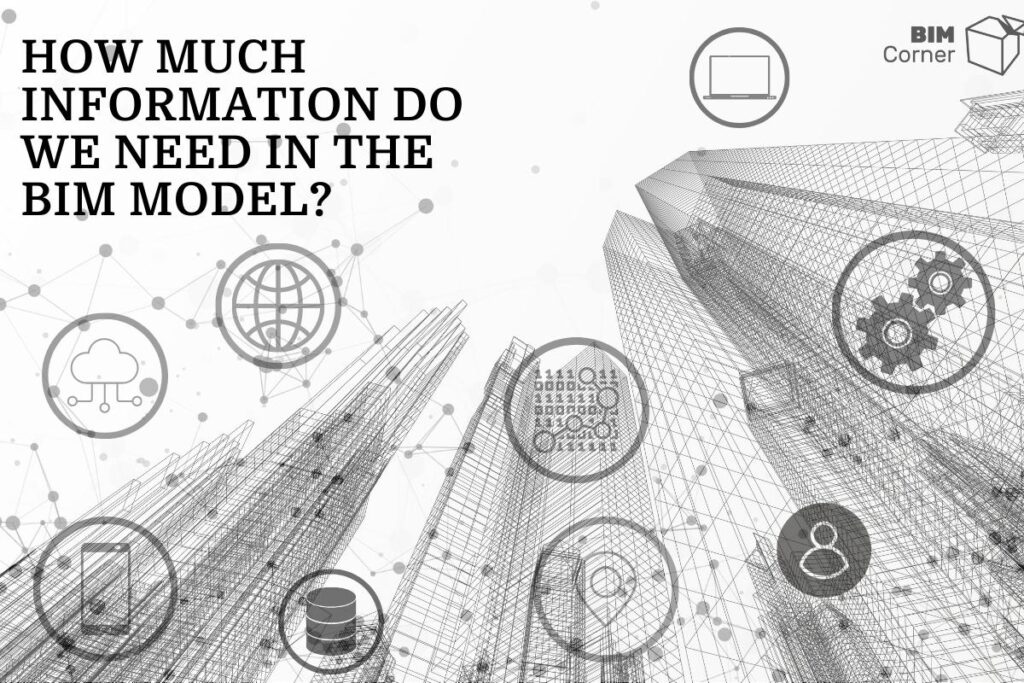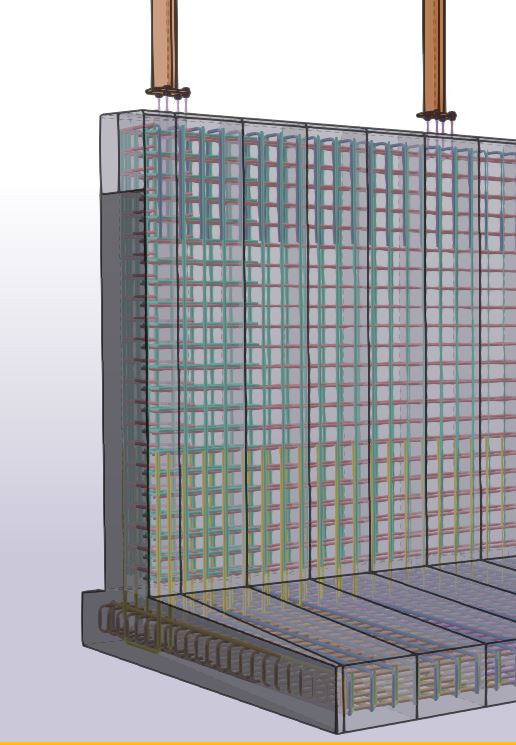Exactly. Given that the term BIM itself includes a reference to object information modeling, it means that the more information we include in the model, the better. After all, this is what we want the model to be the source of information about the building and structure. How else would we be doing all this BIM? More and more often we come across designs based on a model (non-drawing). What does this mean in terms of information? Nothing more or less that the information so far contained in the drawings (dimensions, descriptions, texts, etc.), cannot simply disappear. They have to be added somewhere. The best place is the model. . The question is: how much of this information should be included in the model? Could there be a situation where this information is simply too much and it will be unreadable and too confusing?
- Pack the model with an extreme amount of information
- Do not add any information (except the necessary ones resulting from the geometry of the objects)
1. All data in the model
In the BIM world, it is the basis after all – the 3D model is enriched with INFORMATION, the model attributes include design data, component specifications, etc. In addition, there are data necessary in the Facility Management phase (COBIe data), information on health and safety. This means that a typical model today may contain the following data types: A typical BIM model may contain the following data:
- Geometry
- Design data
- Specifications
- COBie Data
- Health and safety data
This amount of data in the model is already significant. However, this is the basic information that is added to a typical model, and we want to consider as much of the information contained in the model as possible. We want the 3D model to be the source of all design information, to have production (construction) information, to be truly the only source of truth about the design. Is it correct to include all the data we can think of into the model? The list of additional data that seems to be as necessary in the model as those mentioned above is:
- Production data
- Installation and assembly data
- Schedule data (4D)
- Cost data (5D)
- Qualitaty data
- Inspection data
- Order data
- Data on deliveries to the construction site
- Commissioning data
- Demolition data
- Environmental data
2. No data in the model.
Such a solution, despite its archaic approach and similarity to the ancient times of CAD, actually makes more sense than running through the model with a million data. The widespread internet connectivity (also on the construction site), the development of APIs and the multitude of internet services make such an idea quite sensible.
This solution is much more complicated than managing the million properties assigned to each object in the model, but it is much more logical and practical. The data is not kept in one place. teams, industries can more easily control the flow of data necessary for their part of the project, without affecting the work of other teams.
This trend is already slowly developing also thanks to buildingsmart and API-based solutions: https://github.com/buildingSMART/BCF-API
https://technical.buildingsmart.org/projects/opencde-api/















Great article!
It seems really logical. There is still not a solution for this on the market?
When you discussed about golden mean in stringing right balance, we could dump irrelevant data according to RIBA plan of work stages…
Great article Really